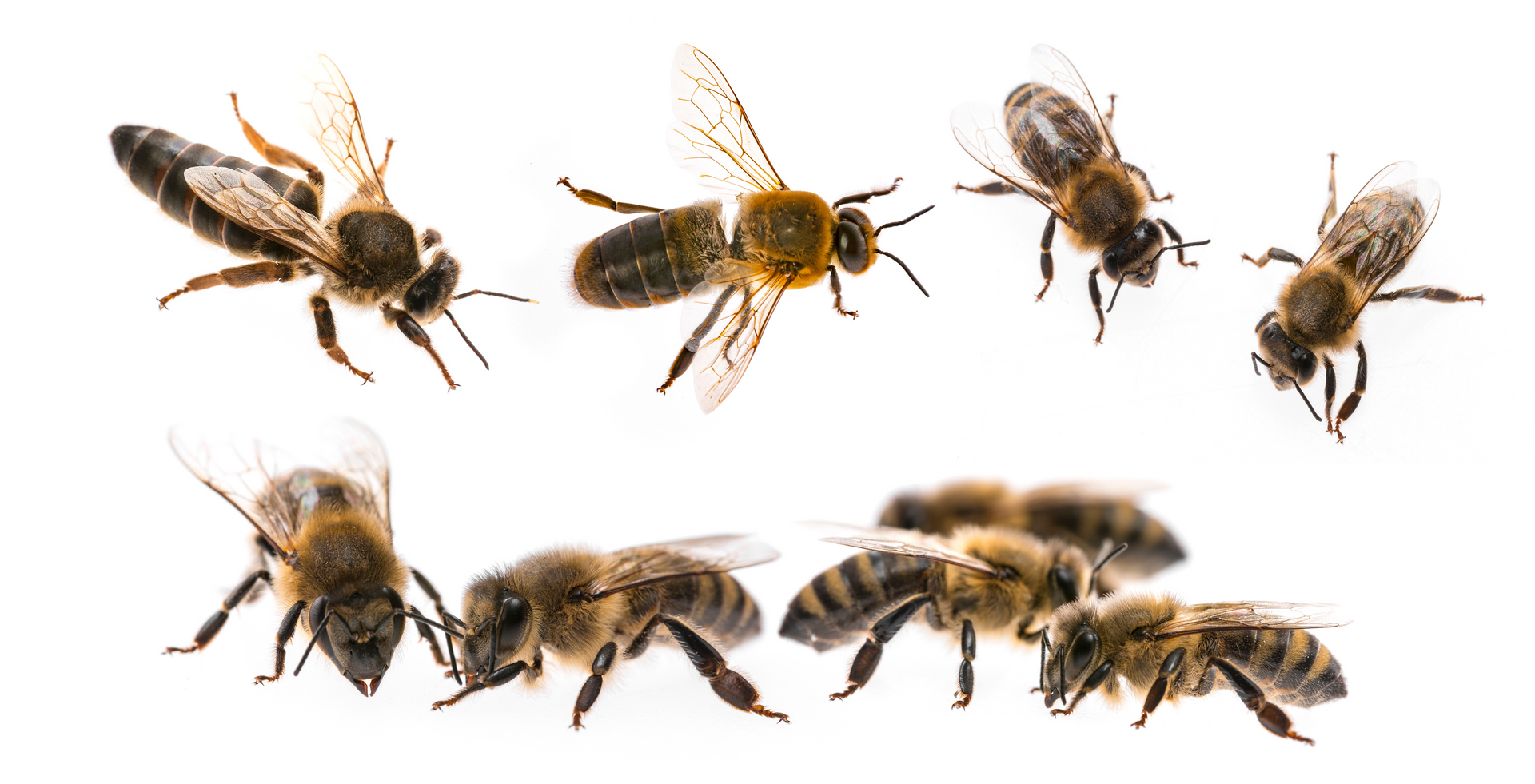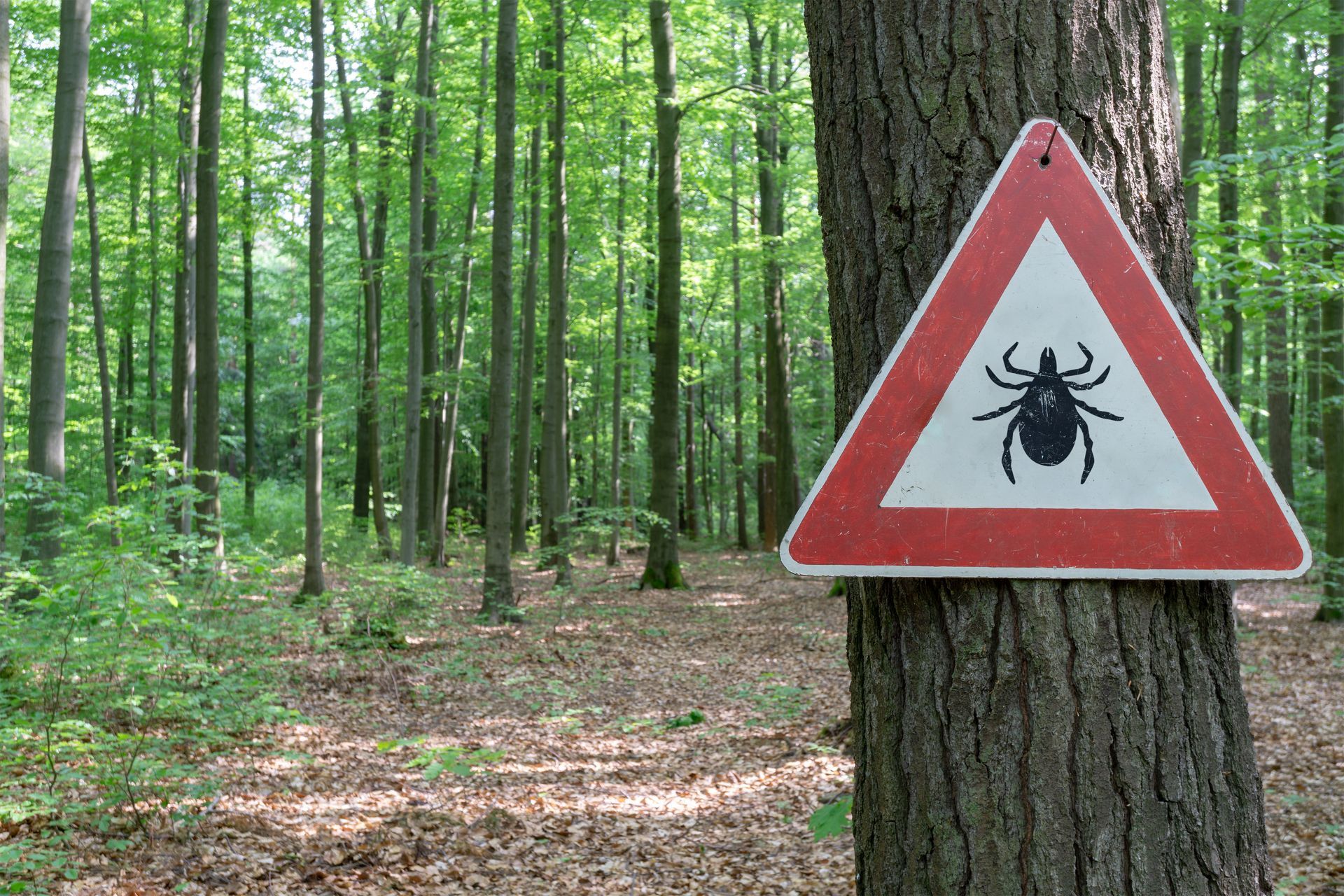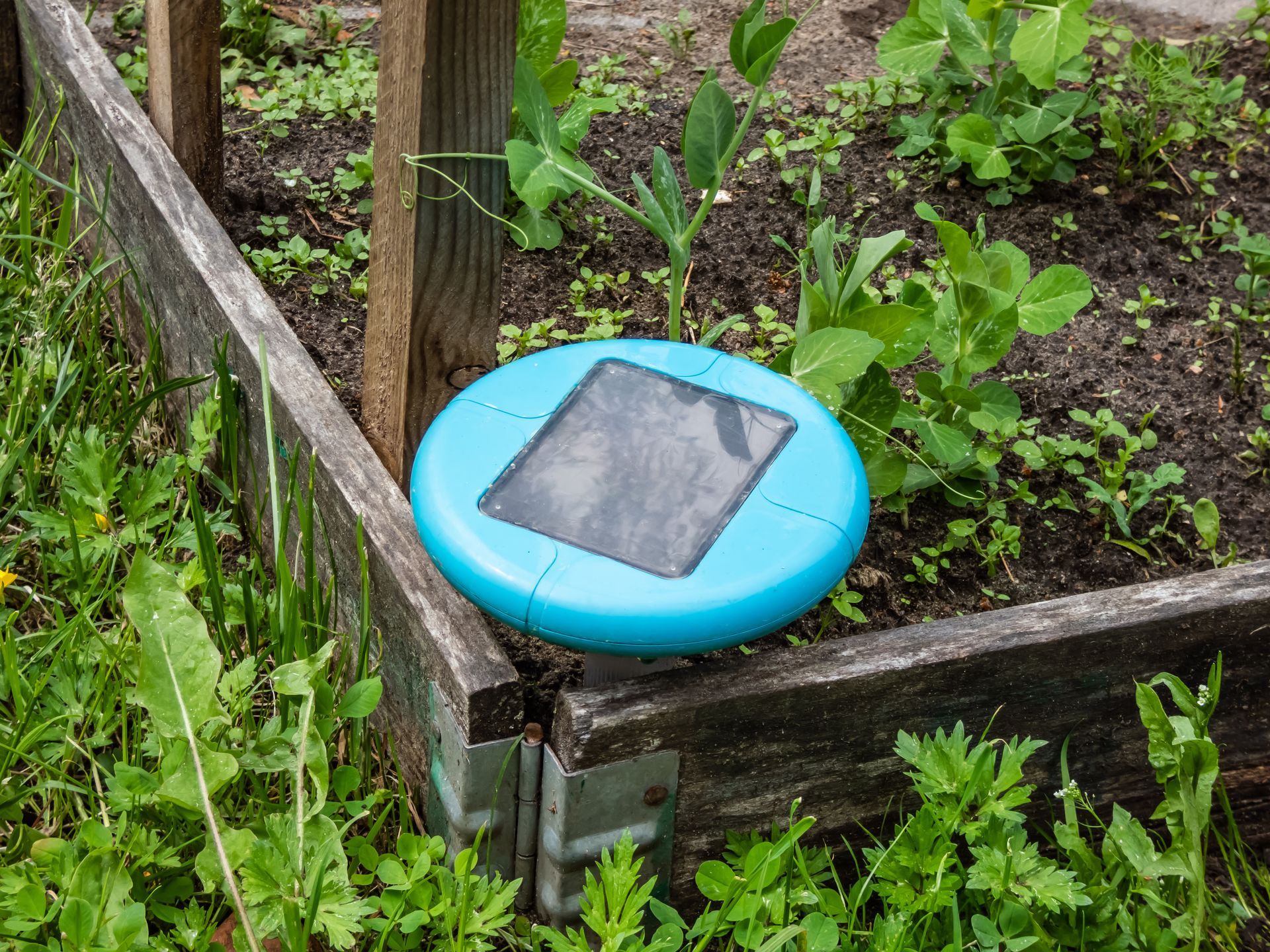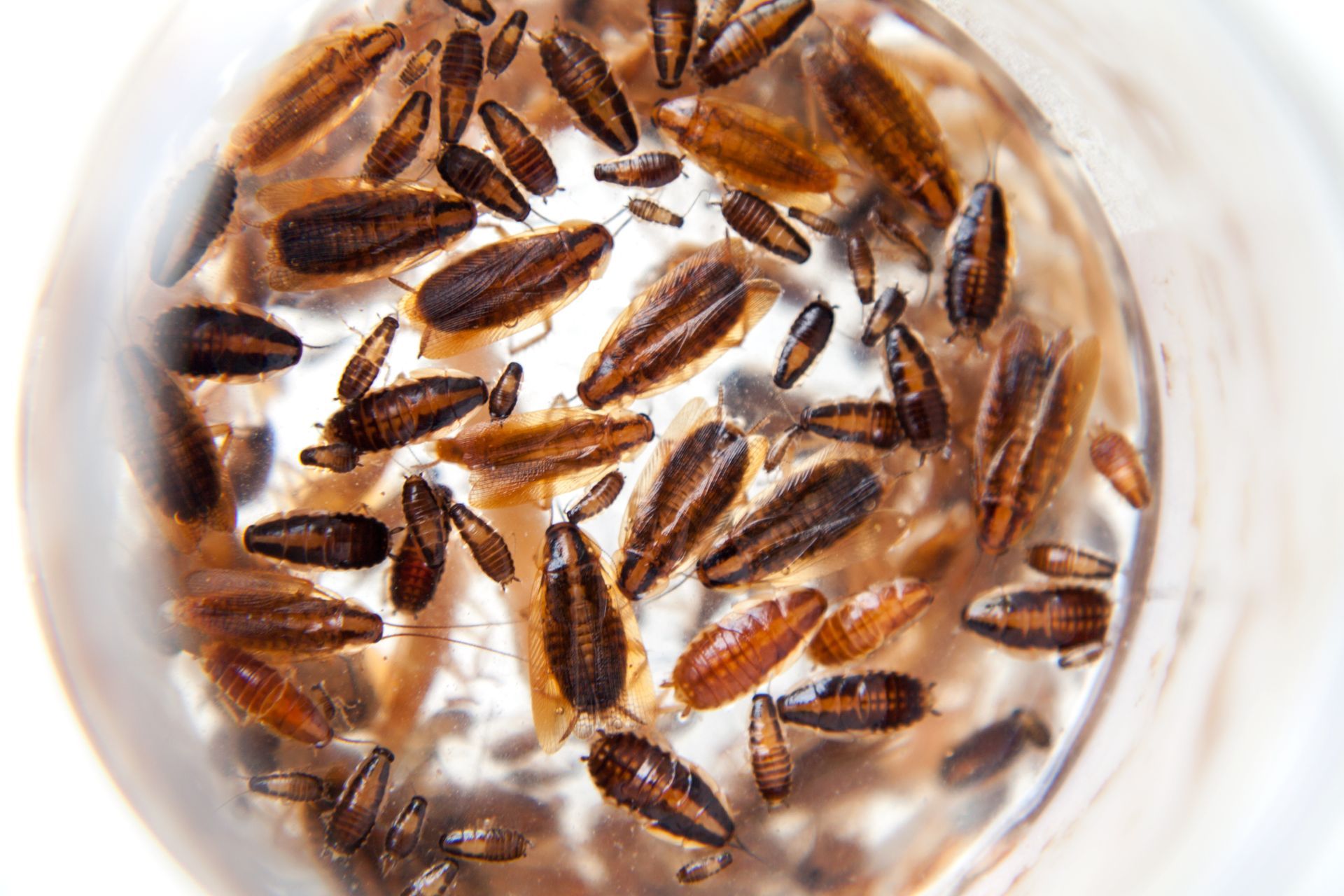What’s the Difference Between Bed Bugs vs Fleas vs Ticks?
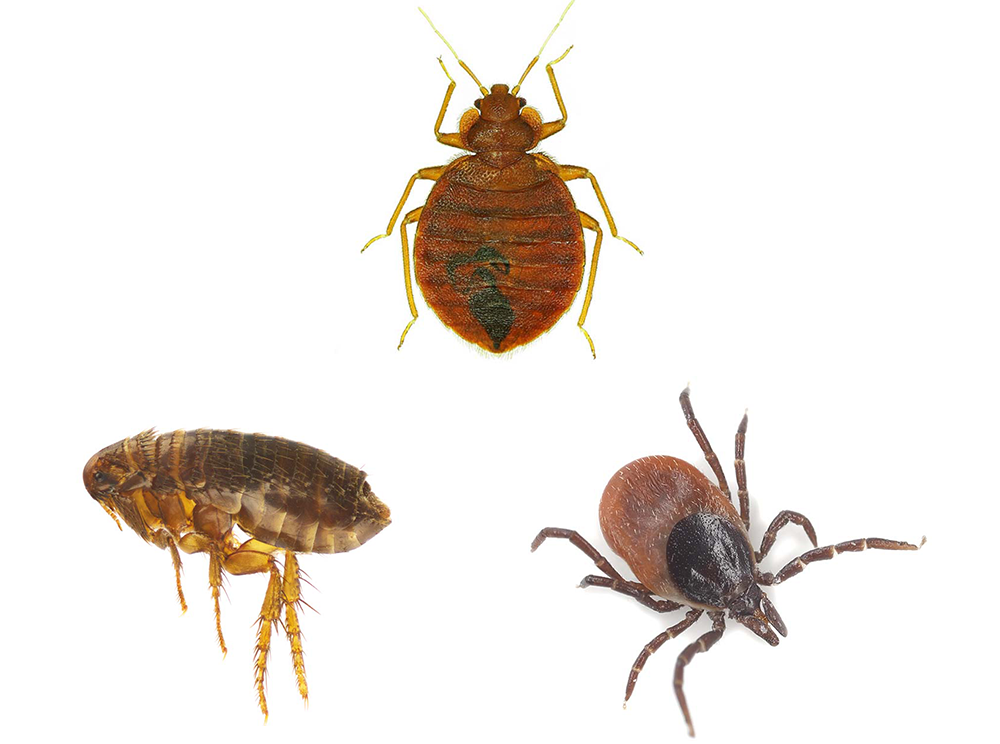
The fact that bed bugs, fleas, and ticks are all small blood sucking parasites is pretty much where the similarities end. There is much more that differentiates each of these insects which is why knowing how to identify these bugs is critical to being able to effectively treat them. Without knowing which bug type you are being attacked by, you may be using treatment methods that are ineffective. This will inevitably give these bugs time to reproduce and expand the reach of their infestation.
Side by Side Comparison
| Attribute | Bed Bugs | Ticks | Fleas |
|---|---|---|---|
| Size | 7 - 8 mm | 4 - 10 mm | 1.3 - 3 mm |
| Color | Red brown | Red, brown, yellow, grey, black | Brown |
| Shape | Flat oval; apple seed | Flat oval; sesame seed | Long, narrow, oval |
| Leg Count | 6 legs | 8 legs | 6 legs |
| Preferred Diet | Humans | Animals | Animals & humans |
| Bites | Exposed skin | Dark, moist, warm locations | Legs on humans; backs and necks of pets |
| Feeding | Every week | Intermittently | Every day |
| Health Hazard | Allergies | Allergies; Lyme disease, tularemia, more | Allergies; Plague, typhus, tapeworm |
| Habitat | Indoors, primarily around mattress | Outdoors, primarily in tall grass and wooded areas | Outdoors, primarily in tall grass and dead leaves |
| Activity | Active at night | Active during day | Active at night |
| Movement | Crawl | Crawl | Jump |
| Life Cycle | 6 - 12 months | 2 years | 2 - 4 months |
| Signs | Active bugs, itchy bites, molted skins, blood and feces stains, musty odor | Bug bite | Active bugs, eggs, feces, excessive pet scratching |
| Prevention | Check accommodations when traveling, avoid secondhand furniture | Preventative medications, landscaping, and avoiding primary habitat | Preventative medications, landscaping, and avoiding primary habitat |
Differences in Appearance
Each of these bugs are easy to differentiate under close inspection. Even though you hopefully won’t be seeing these bugs side by side, knowing what to look for is the first step in proper bug identification.
Size
All 3 of these bugs are small on the grand scheme of things, but fleas are by far the smallest. Fleas are barely visible with a naked eye and require a very close view to tell if the small speck you are seeing is a flea or just some loose dirt. They grow between 1.5 to 3 mm long at maturity. Bed bugs and ticks on the other hand, are visible from the naked eye. Bed bugs grow through several stages before reaching maturity and range from 1.5 mm when they first hatch to 7 – 8 mm long at maturity. Ticks when unfed are slightly smaller than mature bed bugs at around 4mm long. That being said, ticks become engorged after feeding and can grow up to 10mm in size after a blood meal.
Color
Fleas are technically brown, but they are so small that they appear black. This is why they are often confused with loose dirt. Bed bugs are small and reddish brown when unfed and turn a purplish red when engorged with blood. Depending on the species of tick, ticks can vary in color from red, brown, yellow, grey, and black. Ticks also tend to have stripes which make them easier to distinguish from the other blood sucking parasites.
Shape
Bed bugs are flat and oval shaped similar to that of an apple seed. Fleas tend to have long, narrow, oval bodies which appear thin when looking at their bodies from above. Most species of ticks are flat, and teardrop shaped similar to that of a sesame seed.
Leg Count
Ticks are technically arachnids, so they have 8 legs similar to spiders and scorpions. Their legs are long and visibly extend beyond their bodies. Bed bugs are insects and have six legs which are thin and do not appear as visible until they are under much closer inspection. Fleas also have 6 legs but 2 of those legs are much larger because they are used to jump long distances.
Diet
Ticks prefer feeding on animals and spend much of their lives outside putting themselves in a position to latch onto the fur of a wild animal passing by. Sometimes a human will walk through that path and the tick will find themselves able to latch onto that person’s socks or clothing to feed. Bed bugs prefer feeding on humans. Much like ticks who prefer animals but will feed on humans when it is opportune or they are hungry, bed bugs will also deviate from their standard host and feed on animals if it is convenient or if there are a lack of other options. Fleas on the other hand, do not discriminate and will feed on any warm-blooded host. Different species of fleas will have a preferred host but given the option, fleas are happy to feed on either human or animal. That said, fleas are more likely to be attracted to animals since a fur coat will allow fleas to flourish and multiply.
Difference in Feeding Habits
All 3 of these parasites rely on the blood of warm-blooded mammals to survive, but they each have their own unique feeding patterns.
Bites
Bed bugs will move across the surface of your skin and will continue to feed multiple times before they are satisfied. They use their straw like mouths to penetrate your skin and draw blood from anywhere skin is exposed. Bed bug bites often leave bite marks in a line up and down your body due to an individual’s sleeping patterns. When someone is laying down, the exposed area of skin where bed bugs can make contact is where their skin meets the mattress. While ticks can bite just about anywhere, they generally prefer dark, warm, and moist locations to feed on humans. They will typically move towards areas like the groin or armpit to find a suitable place to bury their head to feed. Their unique face structures allow them to latch on securely for several days while they feed until they are completely engorged. Tick bites can be problematic because the way they latch on. They are so securely attached that pulling on the body of a tick can rip off the head which stay buried under the skin. Once they are satisfied, they will disengage and fall off to lay eggs. Fleas tend to jump on their prey as they move past so flea bites tend to be around the ankles, calves, and legs of humans. When fleas feed on animals, they tend to gather on the back and neck where they are most likely not to be scratched off.
Feeding Frequency
Ticks will bite their prey once and feed until they are completely engorged. After they are satisfied, they will fall off and move on to lay eggs. Ticks feed intermittently roughly 3 - 4 times in their lives to continue their egg production, but ticks do not feed as consistently as the other blood sucking parasites. Bed bugs will establish a group close to their host and feed repeatedly as their numbers expand. Individual bed bugs will only need to feed about once a week, but a full-blown infestation will result in multiple bites every night as populations grow. Bed bugs will live for several months so they will feed plenty of times in their lifetime. Fleas will establish a colony on their host, and they will bite often as they need to feed regularly. Throughout their lives fleas will feed every day.
Health Hazard
All blood sucking parasites carry the risk of causing an allergic reaction which can result in itchy red welts. In the worst-case scenarios, sometimes bites from bed bugs, ticks, or fleas can cause a serious anaphylactic reaction which can require immediate medical attention if the proper medication is not available. In addition to the risk of allergic reaction, ticks and fleas are also capable of spreading dangerous pathogens, parasites, and illnesses. Bed bugs can carry pathogens but there is a lack of evidence that they have transmitted those pathogens to humans. Fleas on the other hand, can spread the plague, typhus, and tapeworm. Ticks can spread diseases including Lyme disease, anaplasmosis, Colorado tick fever, Rocky Mountain spotted fever, tularemia, and several other problematic illnesses that require medical care.
Habitat
None of these bloodsucking parasites have the ability to fly so they need to carefully position themselves where they are most likely able to find their prey. Bed bugs feed on humans so they are mostly found indoors, clustered around wherever their host sleeps. In the event that the bed bug population grows too big, they will start to move outwards in search of other food sources. You can find bed bugs in mattresses, bedding, bed frames, carpets, furniture, couches, baseboards, electrical outlets, and more. Ticks latch onto their hosts as they walk around outside so ticks are generally found outdoors in tall grass or bushes. Once they latch onto their host, they will spend some time feeding so they can be brought inside by pets or humans. Fleas are also typically outdoor pests that manage to find their host as they pass by. However, once they attach themselves to a host, they make a new home which means that sometimes fleas will get brought inside. When this happens, fleas will inevitably be found indoors as fleas will lay eggs that get dispersed in the carpets around the home.
When Are They Active?
As their name may indicate, bed bugs live in or near beds and are typically active at night. This is most likely due to their host being in bed during the evening which makes feeding the easiest at this time. That said, they may not be completely nocturnal because they will roam during the day and explore new areas to hide and feed if resources are low. Bed bug activity in areas with seasonality, tends to peak during the hotter months and drops when temperatures get colder. Tick activity depends on the species, but most ticks are more active during the day when their hosts are most likely to be active. The way they latch onto their hosts, is to climb up to the highest point of tall grass and branches so they can get caught in the fur or clothing of something or someone as they pass by. They use the heat and light of the sun to indicate where they need to climb to, so they are much more active during the day. Like bed bugs, ticks are more active during seasons with warm temperatures, but this may be the result of resource availability as many warm-blooded animals hibernate when it gets cold. Without enough food to sustain large tick populations, tick activity generally declines in colder months. While fleas can be active throughout the day, they tend to become more active at night. This may be due to reasons similar to bed bugs as their host is likely resting and less likely to become agitated. Fleas that live on hosts can be active all year round since they have a source of warmth keeping them active.
Movement
All 3 of these blood sucking parasites are wingless insects. Fleas have the ability to jump amazing distances to get to their prey. They have a set of rear legs that acts as spring loaded hinges that propel them in the direction of where they sense warmth. Bed bugs are crawlers that can move rapidly for their size. They are able to crawl a distance of 4 feet in one minute which means they can traverse the length of a large mattress in a couple minutes. For a bug this size, that speed is extremely fast. Ticks are climbers who reach the tops of tall grass and other shrubbery and wait for an unsuspecting passerby. Once they feel a disturbance, they use their legs to latch onto whatever fur or clothing they can so they can find somewhere to feed.
Life Cycle
Bed bugs reproduce relatively slowly when compared against other bugs as they only lay 1 - 5 eggs every 6 – 8 weeks. That being said, bed bug populations are not typically discovered until the population has grown out of hand. If they are not discovered early, bed bug populations will expand rapidly once their numbers have grown beyond a certain threshold. In this time, each egg requires about 10 days to hatch and then another 5 weeks as the bed bug matures through 5 stages of nymphs before reaching adulthood. Once they reach adulthood, bed bugs will live for up to 10 months which results in several batches of eggs being laid in their lifetimes.
After 2 – 12 days, fleas will hatch from eggs as larvae. The larval stage can take 4 - 24 days depending on environment and resources, which is followed by the pupal stage. The pupal stage is when the larvae spin themselves into a cocoon and can last 5 – 14 days. Once they complete their pupal stage, they will emerge as mature adult fleas where they will continue their reproduction cycle and lay another batch of eggs with every feeding. They will feed every day and lay up to 50 eggs after each blood meal before dying off. The average flea will survive for around 8 – 14 days but in ideal conditions, fleas have been known to survive for up to 100 days.
Tick life cycles can last as long as 2 – 3 years in ideal conditions. They move through 4 stages of their life cycle including: egg, larvae, nymphs, and adults. They lay eggs in spring and spend the first year of their lives as larvae. The following spring and summer they will emerge as nymphs before becoming adults in the fall and winter of that same year. They will spend 6 months to a year and half as adults where they will lay eggs only a handful of times but with each cycle will produce thousands of eggs.
Signs of Infestation
The following are signs of bed bug infestations:
- Visible bed bug activity and eggs
- Rust colored smears on your mattress indicating bed bug feces
- Dried bed bug molted exoskeletons
- Musty odor
The following are signs of flea infestations:
- Visible flea activity on pets or in home
- Tiny, clear, yellow flea eggs on your pet
- Dark specks of flea droppings or “flea dirt” on your pet
- Excessive scratching from your pet targeting the back or neck
Ticks are solitary bugs that typically do not infest a home. There will be large clusters that can be found outside.
Prevention
Preventing ticks and fleas can be done similarly by keeping the outside of your home well maintained. This means trimming back tall grasses, keeping bushes and shrubs trimmed, and cleaning up piles of leaves and other organic debris. Also avoid heavily wooded paths that are not well traveled and regularly check yourselves and pets upon return from outdoor adventures. Fleas and ticks can also be prevented by using medication designed to stop blood sucking parasite activity on pets which are the most common carriers of these bugs. Beg bug prevention requires a bit more since these pests are notorious hitch hikers that manage to catch a ride on an unsuspecting hosts clothes or luggage after staying at an infested accommodations while traveling. Be sure to check new accommodations upon arrival for signs of bed bug activity and be sure to minimize leaving your baggage on mattresses and couches when traveling. Also avoid buying secondhand furniture without first inspecting it for bed bugs.
Contact EcoGuard Pest Management at the First Sign of Activity
If you have seen signs of bed bug, flea, or tick activity, it may be time to contact licensed professionals who are trained to exterminate these pests. Make sure to schedule an appointment before these bugs get out of control. The team at EcoGuard Pest Management has years of experience successfully and effectively treating homes and businesses for these pests. We can send out a licensed pest control professional immediately for an inspection before creating a customized treatment plan designed to stop these bugs. Call today to speak with one of our experts!




